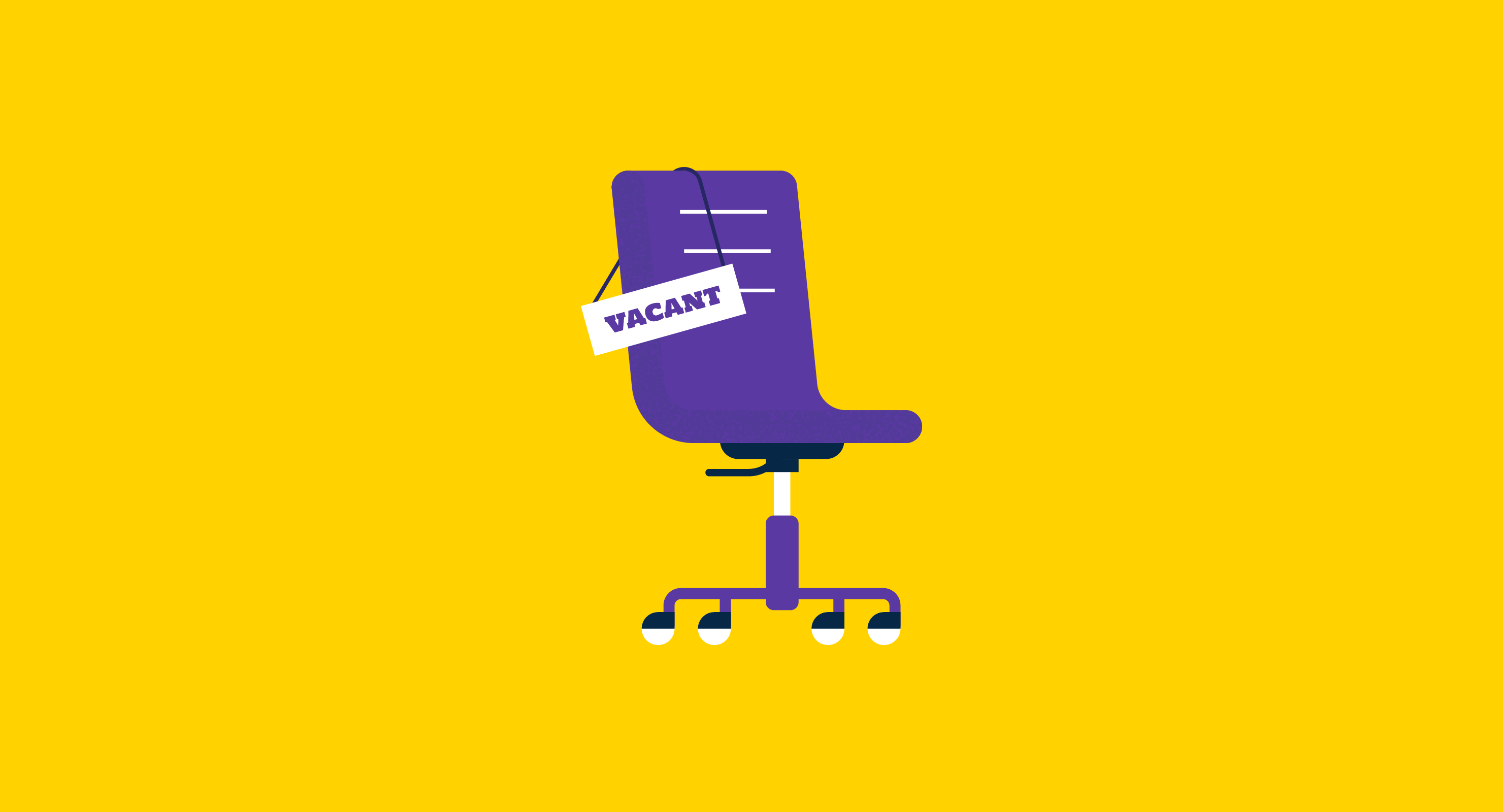Recruiting top talent is crucial to the success of any organization.
Whether it’s for a sales representative or a C-suite level position, with every open role, a recruiter has the chance to hire someone that can bring the organization to the next level.
To do this, it’s important to have an ironed out recruitment process.
What is a recruitment process?
The recruitment process includes all steps to finding and selecting a new employee to fill an open role within an organization. This includes collecting resumes, interviewing candidates, and onboarding a new hire.
The process of candidate sourcing is typically conducted by a recruiter, human resources manager, hiring manager, or a mix of all three. It’s all about finding the right person through the application process with the right skill set, experience, and personality to join your team. Doing so is easier said than done, and requires collecting a lot of resumes and interviewing candidates that may not necessarily be a match.
11 steps in the recruitment process
When you streamline your company's recruiting process, you’ll be able to find qualified candidates quicker and more efficiently than ever before, all while increasing retention. When a clear plan of action is established, and those in charge of hiring are utilizing recruiting automation software, these 11 steps are easy to follow.
Keep in mind that steps won’t always be the same and it will depend on the industry your organization is in and the role you’re filling.
1. Identify the need
You can’t start your search for the right candidate before having an understanding of the need for the role within your organization.
You’ll need to narrow down if the need for the role comes from:
- Filling a vacated position
- Better managing a team’s workload
- Expanding the reach of the organization’s tasks
You’ll also want a clear grasp of the job specifications, including the skills, experience, and knowledge needed for the role.
Essentially, the open role you’re hiring for will either be newly formed or recently vacated, and it’s best to know before you start the talent acquisition or recruitment process.
2. Create a recruitment plan
Once the need is squared away, you can roll up your sleeves and create a plan of action. If the position you’re hiring for is brand new, it’s important that you clearly identify how the role will align with the goals of your organization and its business plan.
How you recruit for the role will depend on a number of factors, including:
- The size of your organization
- The salary structure
- The growth rate of your organization
- The current economy and the state of employment
Once you have the information needed regarding the hard and soft skills the role will require and have buy-in from everyone involved in the hiring process, you can begin your search.
3. Write a job description
Knowing how to write a job description is key to attract the top talent on the market. Preparing a comprehensive job description will not only create an understanding of what your potential employees must have in order to succeed in the role, but also gives job seekers a checklist that they can compare themselves up against before applying.
A well-written description will ensure you get applications from qualified candidates. At the very least, it should include:
- Job title
- Duties and responsibilities
- Qualification and skills
- Job location
- Compensation, perks, and benefits
Be sure to personalize it as much as you can, use the right keywords, and provide the right details when you can. Avoid cliche terms like guru, rockstar, or jack of all trades.
4. Advertise the role
Now it’s time to get the role in the faces of potential candidates. Start by notifying your internal team about the job, so they can potentially refer someone they believe would be a good fit. Then, get the job posting out to the masses by sharing to LinkedIn, social media, and various job boards. Utilize a recruitment marketing strategy that will attract, engage, convert, and nurture job seekers to join your organization.
You’ll also want to utilize your organization's career page and social channels to get the word out.
5. Review candidates
Applications for the role will likely come in either through a previously set up email or the applicant tracking system (ATS) software your organization uses. Usually, the role of reviewing the applications, resumes, and cover letters will fall to the human resources manager, who will also eliminate anyone who fails to meet the minimum requirements for the role.
They may decide to go with a resume parsing tool to go through these applications faster and more efficiently, as a way to truly find the best candidate from the batch of applicants. Once a group of the best of the best has been assembled, the HR team or hiring manager will then decide who they want to interview.
6. Conduct interviews
It’s time to put a face to a name – or rather – a face to an application, and start conducting interviews.
You can start off the interview process with an initial phone screen to assess if the applicants have the right skills needed for the role and if the candidate will align with the company culture and values.
Once you feel the candidate could be a good fit, you can move them along to an in-person or video interview. Depending on the role and the size of your company, you’ll probably need more than one interview before officially making an offer.
Interviews early on in the recruiting process are usually one-on-one, relatively short, and go over a candidate’s job history, skills, and availability. Additional interviews tend to be with potential managers, executives, or other members of the team the potential new hire will be a part of. These tend to be more in-depth as the selection process narrows down their talent pool of candidates.
Final interviews are even more in-depth and typically include conversations with senior leadership. They are extended to a very small group of applicants with the best candidate experience.
7. Send an applicant assessment
Depending on the role and the industry your organization falls in, you may want to send a pre-employment assessment over to qualified applicants for them to complete.
This standardized test can measure a wide variety of skills and qualities, like personality traits, problem-solving skills, reading and reasoning, emotional intelligence, and more.
8. Run a background check
When you find a candidate that could be the perfect fit, make sure they are who they say they are by running a background check. Doing so will review the candidates’ criminal record, verify their eligibility and employment history, and run credit checks. You may also choose to check their social media, like Facebook, Twitter, and Instagram to make sure they will represent your company in a positive and professional manner.
9. Double check their references
Once they pass the background check, you’ll also want to review their references. Reference checks will verify specific information that the candidate shared with you regarding their previous employment. You can ask these references questions regarding their job performance, responsibilities, experience, and how they conducted themselves in the workplace. Also, feel free to get right to the point and ask “would you rehire this person?”
10. Offer the job
Once a top candidate is identified, it’s time to extend the job offer.
When crafting the offer letter to the new hire, include details regarding:
- Salary
- Benefits
- Paid time off
- Start date
- Profit sharing
- The work from home/remote work policy
- Company equipment
It’s common for negotiations to follow once the written offer is given and the candidate has time to look it over. It’s up to the HR team to determine which details can be negotiated and which cannot.
11. Hiring and onboarding
Once the candidate signs the letter, you can move to the official hiring and onboarding process. This will typically include paperwork like the Form W-4, Form I-9, state withholdings, the employee handbook, and more.
Once everything is signed, you can move into the onboarding phase, which is ensuring the new member of your team feels welcome, introducing them to the correct people, and essentially laying the proper groundwork to ensure they see success within the organization. It may be in the new hire’s best interests to be assigned a mentor or a “buddy” to meet with to help them settle into their new role.
A smarter way to grow your team
A comprehensive recruitment process can help your company grow and achieve long term success. Don’t be afraid to take a step back, optimize, and access the process as you go, as recruiting is rarely a “one size fits all” plan of attack.
At the end of the process, you should feel strongly about the candidate you have found and confident they’ll be a part of the team for the long haul.
Of course, not all employees stay forever. When the time comes to say goodbye, learn how to offboard effectively so you don’t burn any bridges.
Quer aprender mais sobre Software de Gestão de Relacionamento com Candidatos? Explore os produtos de Gerenciamento de Relacionamento com Candidatos.

Mara Calvello
Mara Calvello is a Content and Communications Manager at G2. She received her Bachelor of Arts degree from Elmhurst College (now Elmhurst University). Mara writes customer marketing content, while also focusing on social media and communications for G2. She previously wrote content to support our G2 Tea newsletter, as well as categories on artificial intelligence, natural language understanding (NLU), AI code generation, synthetic data, and more. In her spare time, she's out exploring with her rescue dog Zeke or enjoying a good book.

